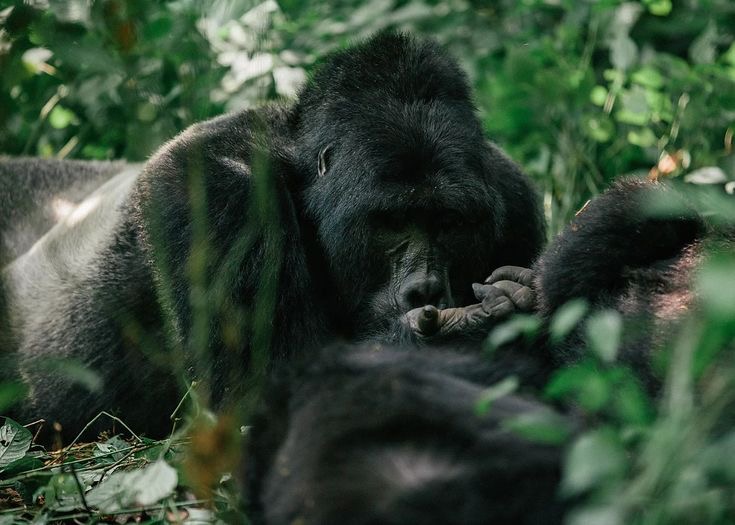
Gorilla Trekking in Rwanda: July and August Edition
Gorilla Trekking in Rwanda: July and August Edition. Rwanda, often referred to as the “Land of a Thousand Hills”. Offers an experience that is both thrilling and deeply moving gorilla trekking. Nestled within the lush, verdant forests of Volcanoes National Park. This activity allows adventurers to come face-to-face with one of the world’s most endangered species, the mountain gorilla. While gorilla trekking can be enjoyed year-round, visiting in July and August presents some unique advantages. This guide will walk you through everything you need to know to make the most of your gorilla trekking adventure during these peak months.

Why July and August?
July and August are part of Rwanda’s dry season, making these months ideal for gorilla trekking. The trails are less muddy, and the weather is generally more predictable, which enhances the overall experience. Moreover, the dry season corresponds with the high tourist season, ensuring that facilities and services are operating at their best.
Planning Your Trek
Before you embark on this once-in-a-lifetime journey, thorough preparation is key. Here are some crucial steps to consider:
Securing Permits
Gorilla trekking permits are highly sought after and limited to 96 per day to ensure minimal impact on the gorillas and their habitat. Therefore, it’s advisable to book your permit well in advance. The cost for a permit is $1,500 per person, which may seem steep, but it contributes significantly to the conservation efforts and the local communities.
Choosing the Right Gear
Given the dense forest and varying altitudes, appropriate gear is essential. Comfortable, waterproof hiking boots are a must, as are long-sleeved shirts and trousers to protect against stinging nettles and insect bites. Additionally, a lightweight rain jacket, a hat, and gloves will prove invaluable. Don’t forget to pack a good pair of binoculars and a camera with a zoom lens to capture those unforgettable moments.
Arrival and Acclimatization
Upon arriving in Rwanda, most visitors spend a night in Kigali, the capital city, before heading to Volcanoes National Park. Kigali is a vibrant city with a rich history, and taking a day to explore its attractions can be both enlightening and enjoyable.
Journey to Volcanoes National Park
The drive from Kigali to Volcanoes National Park takes about two to three hours. The journey itself is scenic, with rolling hills, terraced landscapes, and glimpses of rural Rwandan life. As you approach the park, the anticipation builds, and the cool, misty air of the mountains envelops you.
The Day of the Trek
On the day of your trek, you will start early. Trekkers gather at the park headquarters in Kinigi at around 7:00 AM for a briefing. Here, you are assigned to a group of up to eight people, along with a guide and trackers. The guides provide essential information about gorilla behavior, safety protocols, and the importance of minimizing human impact.
The Trek Begins
The trek itself can vary in duration, typically lasting between one to four hours each way, depending on the location of the gorilla family assigned to your group. The hike takes you through beautiful but rugged terrain, including bamboo forests, open grasslands, and dense thickets. The experience is as much about the journey as it is about the destination, with opportunities to see other wildlife and bird species along the way.
The Magical Encounter
Eventually, your guide will signal that you are approaching the gorilla group. As you move closer, excitement mingles with awe. For one precious hour, you will be able to observe these magnificent creatures up close. Watching a silverback command his group, playful juveniles swinging from branches, and mothers nurturing their infants is an experience that words can hardly capture. Remember to keep a distance of at least seven meters and avoid making sudden movements or loud noises to respect the gorillas’ space.

Post-Trek Reflections
After the trek, you will return to the park headquarters, where you can share your experiences with fellow trekkers and receive a certificate of participation. Many trekkers find this to be an opportune moment to reflect on the significance of their encounter and the importance of conservation efforts.
Accommodations and Local Experiences
Volcanoes National Park and its surroundings offer a range of accommodations, from luxury lodges to budget-friendly options. Many lodges provide stunning views of the Virunga volcanoes and offer guided nature walks, cultural visits to nearby villages, and opportunities to engage with the local community.
Conservation and Community Impact
One of the most rewarding aspects of gorilla trekking in Rwanda is knowing that your visit contributes to the conservation of mountain gorillas and the well-being of local communities. A significant portion of the permit fee goes towards funding anti-poaching initiatives, habitat preservation, and supporting the livelihoods of the people living near the park.
Conclusion
Gorilla trekking in Rwanda during July and August is an unparalleled adventure. The dry season offers the best conditions for trekking, and the encounter with the mountain gorillas is something that will stay with you forever. From the preparation and journey to the heart-pounding moment when you first see the gorillas. Every aspect of this experience is designed to be immersive and impactful. As you leave Rwanda, you’ll carry with you not just memories, but a deep appreciation for the beauty of nature and the importance of protecting it. The Ultimate Guide to Gorilla Trekking in Rwanda: July and August Edition.
Related Posts;
